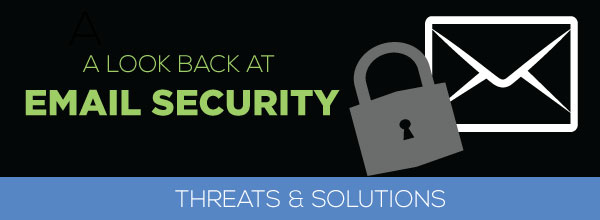The first documented email spam message was sent by Gary Thuerk on May 3, 1978 over the ARPAnet – a military computer network that preceded the internet. This message was a solicitation sent to 400 people and advertised his line of new computers. Near the end of 1994, Usenet (a newsgroup precursor to the internet) was flooded by an advertisement for the immigration-law services of Laurence A. Canter and Martha S. Seigel. So it began.
The number of fraudulent emails escalated quickly to comprise the vast majority of all emails sent. Email attacks included (and still include) malware attacks, phishing attacks and spamming.
- Malware attacks include malicious software that takes over computers in order to spread to other devices. Some malware will infect a computer, turning it into a botnet which gives the cyber criminal control of the device where they can use it to send malware to others.
- Phishing attacks exist to steal information, like log-ins and passwords. From there, the cyber criminal can use the stolen information to assume control of private accounts.
- Spamming emails are designed to coerce a victim into spending money on counterfeit products, often advertising pharmaceutical goods or security software. According to one study, 93 billion spam messages were getting past technical defenses like email spam filters and blacklists.
Although content-filtering solutions had gotten smarter, innovation couldn’t (and still can’t) keep up with spammers, who always stay one step ahead. With countless attacks each year and hacking strategies continually evolving (becoming more and more sophisticated), it became clear; the email security model was broken. Additionally, we recognized that in a professional setting, what matters are the individuals in your community: those positively contributing to your success and productivity at work. This notion combined with the broken state of email security led us to the concept of Sendio.
Sendio offers products that create an inherently safe email environment through the use of email “communities” that define what is allowed, and reject everything else. This positive and intuitive approach to email security turned the previous model upside down as it shifted focus from the bad to the good and allowed for no ambiguity. You will never feel the threat of malware, phishing or other email attacks and you will always receive important email messages, never having to worry about necessary emails getting stuck in your spam filter. You decide who you should receive mail from, it’s that simple.

//

